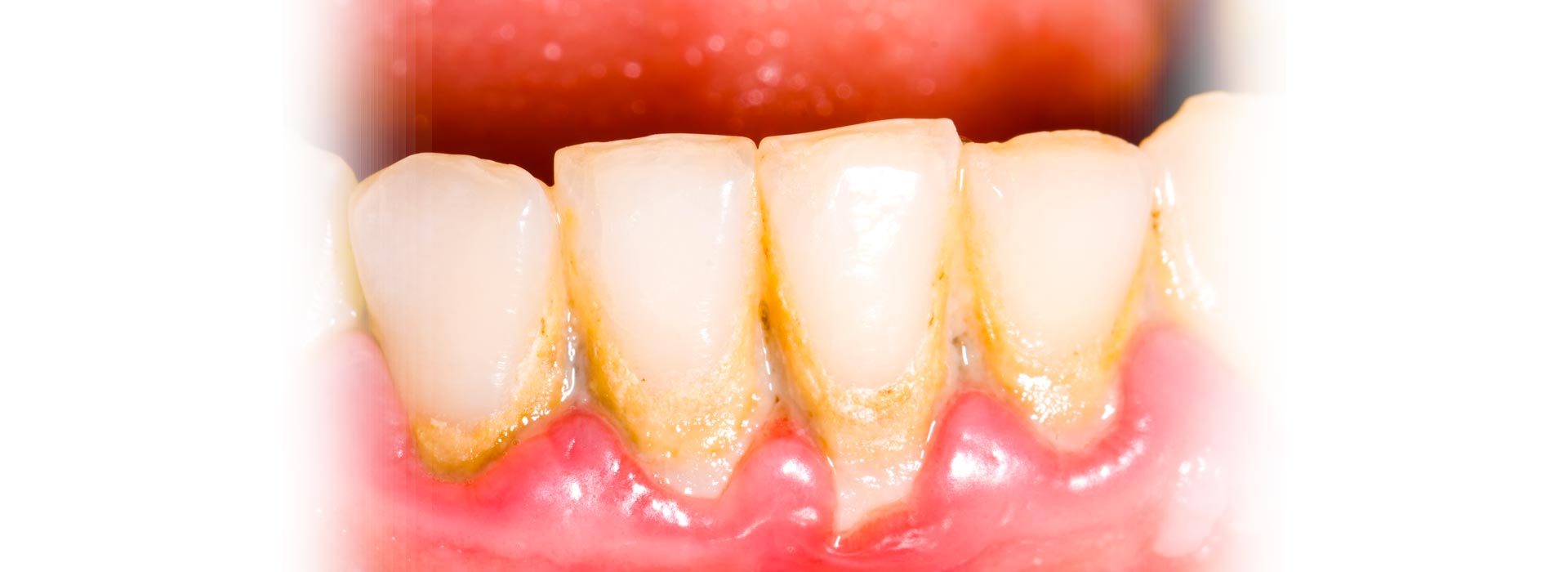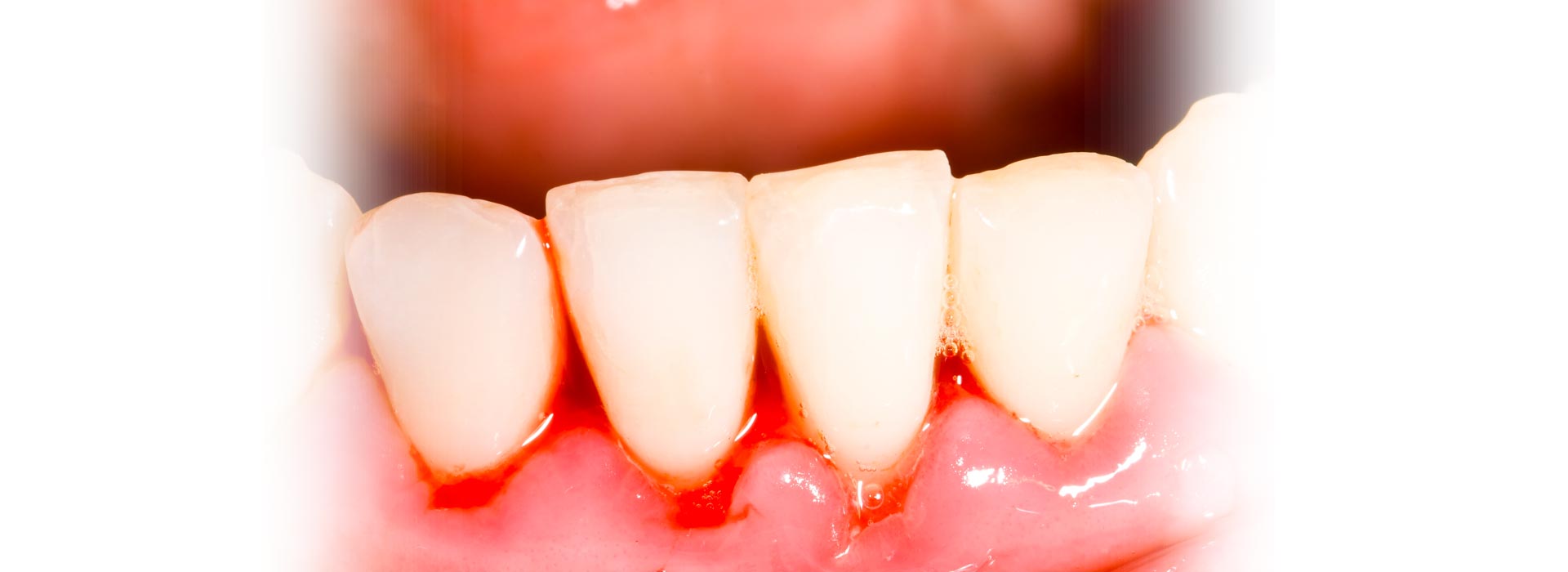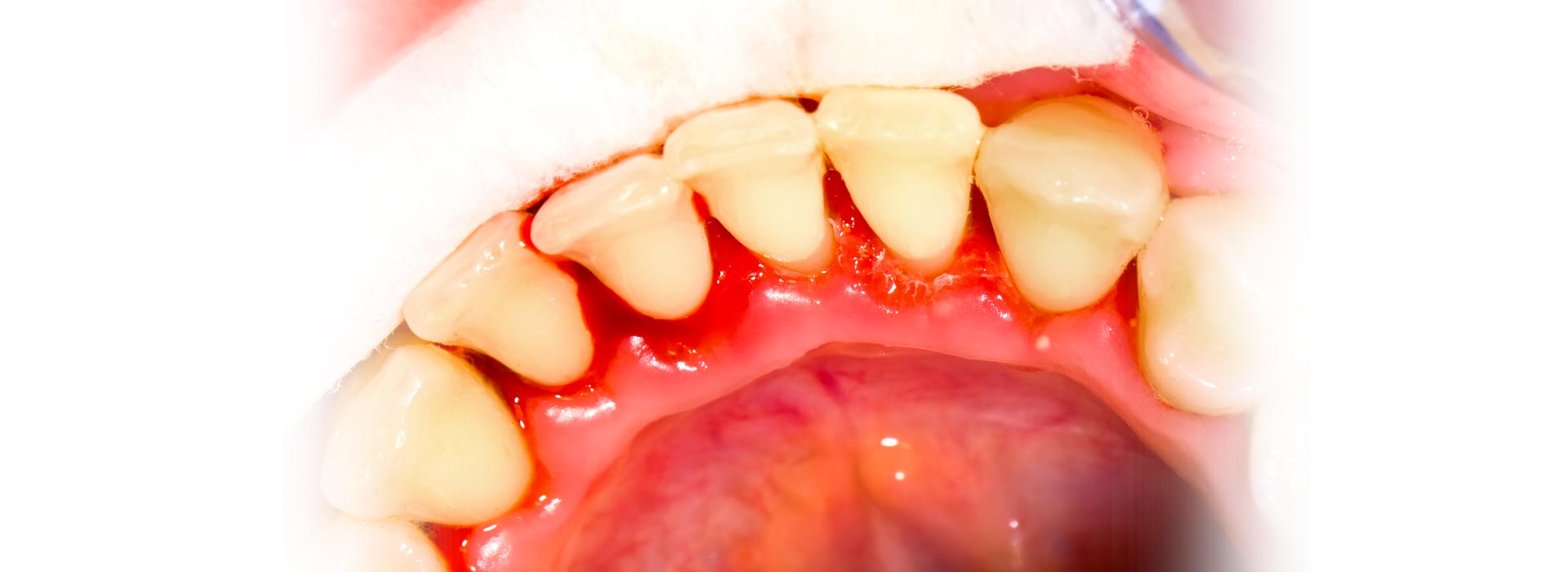What is a periodontal disease?
Periodontal disease is often referred to as “Gum Disease” or “Gum Infection” and it is the term used to describe the inflammation of the gum and its supporting tissues.

Periodontal disease ranges from a simple gum inflammation (Gingivitis) to a serious destruction of the gum and supporting bone tissues (Periodontitis).
If the condition is severe enough, the involved teeth may be lost.
Periodontal disease is quite common and based on the research, about 50% of the population have some degrees of periodontal diseases and for adults 65 and older, the percentage increases to 70%.
What is the cause?
Main cause of the periodontal disease is bacteria that are present in the mouth causing bacterial infection on the gum tissues. There are many types of bacteria present in the oral cavity and they are often found in dental plaque.
Dental plaque is a biofilm that contains sticky mucous and bacteria colonizing often on a tooth surface or gum pockets around the teeth.
When oral hygiene is poorly or inadequately controlled, this plaque can harden to form “tartar” which makes it very difficult to remove. Even brushing cannot remove this tartar and it often makes plaque to build up even more heavily.
When plaque builds up around the gum, gum gets inflamed as defence mechanism from the body.
Long standing condition with build up of plaque and tartar often is the main reason for periodontal diseases.
Risk Factors
- Smoking
- Diabetes
- Genetic factors
- Medications
- Hormonal changes (esp in women)
What are the symptoms?
- Bad smell/bad breath
- Reddish gum
- Gum bleeding
- Gum swelling
- Gum sensitivity
- Gum soreness
In more severe cases
- Gum recession
- Gum swelling
- Abscess
- Pus
- Pain
- Loose teeth

How can you prevent?
Other than some aggressive forms of periodontal diseases, we can prevent gum diseases by preventing bacteria in the mouth.
It involves 2 major forms of care:
Home care
By Providing good oral hygiene. Brushing twice daily & flossing once daily with the right techniques
Professional care
By receiving regular professional cleaning done at the dentist. 6 monthly professional cleaning is recommended. For people who have existing periodontal conditions, dentist may recommend more frequent dental visits.
What is involved in a periodontal treatment?
Depending on the severity of the periodontal diseases, the treatment approaches are different. All periodontal treatments are aimed to deal with the gum infection.
Scale and Clean
When you visit your Dentist in Windsor for a regular dental check up and cleaning appointment, you are actually receiving a periodontal treatment by getting the professional cleaning done. By removing the plaque and “tartar” that cannot be removed by brushing alone, are removed thoroughly at the dentist.
Majority of gingivitis or gum inflammations that do not involve surrounding bone tissues or loss of attachment, can be managed by this professional cleaning at your regular dental visit.
Deep cleaning (Scale & Root Debridement)
Deep cleaning approach is often needed for the periodontal conditions that involve some bone loss with deep pocketing in the gum. Bottom of the gum pockets cannot be cleaned well with home care, therefore professional deep cleaning is needed.
This often involves numbing up the gum and removing bacteria inside the gum pockets to reduce the inflammation and hopefully re-attach the gum to the root surfaces.
Surgical approach
For more advanced periodontal conditions or for the conditions that are “unresponsive” to deep cleaning approach, surgical approach can be involved. This involves surgically opening the involved gum tissues and debride away the plaque and tartar in the affected regions. The area is thoroughly cleaned and disinfected and sutured back up for healing.
Depending on the conditions, medications and suitable mouthwashes may be used.
All periodontal treatments require good monitoring and thorough on-going care.
































